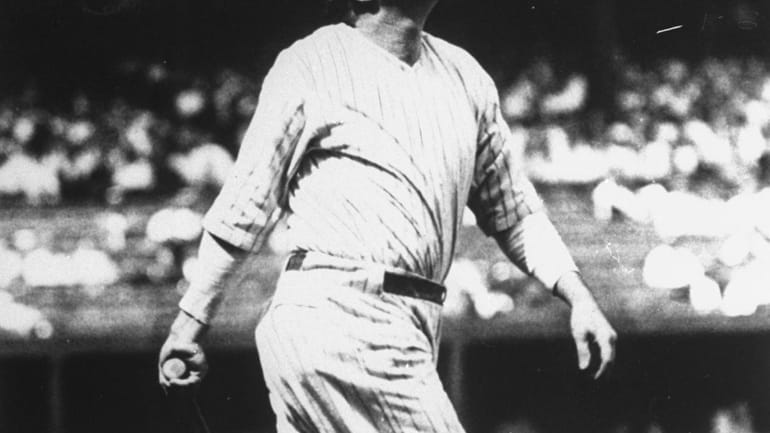Beltran needs to heal in a hurry for Cardinals

St. Louis Cardinals' Carlos Beltran makes a catch by Boston Red Sox's David Ortiz during the second inning of Game 1 of the World Series. (Oct. 23, 2013) Credit: AP
Sixteen years. That's how long Carlos Beltran waited to play in the World Series. And when he finally did last night at Fenway Park, the experience of a lifetime lasted a total of two innings.
Ironic? There's not a single English word that can fully encapsulate the bizarre twist of fate that conspired to send Beltran to Mass General Hospital before he could even come to the plate a second time.
Here's how Beltran's World Series went. Line up for introductions. Listen to Mary J. Blige sing the national anthem. Strikeout.
And after watching the Cardinals kick the baseball around for two innings, suffer a rib-smashing collision with the rightfield wall while making a spectacular catch to rob David Ortiz of what would have been a game-obliterating grand slam.
The official diagnosis was a right rib contusion for Beltran, who did not appear in the clubhouse after the Cardinals' 8-1 loss. GM John Mozeliak said that X-rays and the CT scan were negative, but beyond that, he was unsure of Beltran's status for Game 2.
"I haven't even spoken with him yet," Mozeliak said. "So to leverage my hope -- based on how he feels and what the trainers are telling me -- we are somewhat optimistic."
Beltran had played 22 games at Fenway Park, but Wednesday night was his first in right, where the chest-high bullpen wall can be dangerous to the uninitiated. Earlier this month, in Game 2 of the ALCS, Torii Hunter took a frightening head-over-heels spill in trying to snag Ortiz's tying slam.
Hunter, remarkably, was fine. Only his pride was damaged, along with the Tigers' chances of taking a 2-0 lead in the series. Which makes Beltran's injury even more difficult to comprehend. This time, Beltran had a good read on Ortiz's deep drive, and reached as far as humanly possible before snatching the ball back as his side slammed into the padded wall.
If Beltran is lost an extended period, that guts the St. Louis lineup and seriously hinders the ability to go toe-to-toe with the Red Sox's relentless offense. The switch-hitting Beltran had averaged a home run every 10.3 at-bats during his playoff career, which was the third-best ratio in history, and was batting .337 with 16 homers and 37 RBIs. In addition, 30 of his 55 hits had been for extra bases.
"Obviously you want to see you club at full strength," Mozeliak said. "You don't want to go into this thing where you lose somebody early on. Hopefully he'll be ready to go."
Leaving a World Series game is one thing. But in Beltran's case, this was a lifelong goal, and not something to bow out of due to minor discomfort. On top of that, Beltran has played through what has appeared to be much worse beatings, so there's no reason to doubt his tolerance for pain.
For the skeptics, do a little research and you'll be reminded of how in 2005 Beltran returned to the lineup seven days after that horrific outfield crash with Mike Cameron at Petco Park. While the more critically-injured Cameron was having his face reconstructed, Beltran chose to skip surgery for his fractured cheekbone and played using a slightly more padded helmet for protection.
The Mets were still alive in the wild-card race in late August (imagine that) and Beltran risked further complications by trying to keep them in the hunt. During the last few seasons of his Flushing career, Beltran struggled to live up to his $119-million expectations on two aching knees missing too much cartilage. If there is a worse pain for an athlete than the base surface of two bones rubbing together, it probably hasn't been invented yet.
The sting for Beltran Wednesday night was twofold. But the rib pain probably hurt less than the disappointment, and the only remedy for that is to get back in the Cardinals lineup as soon as possible.

